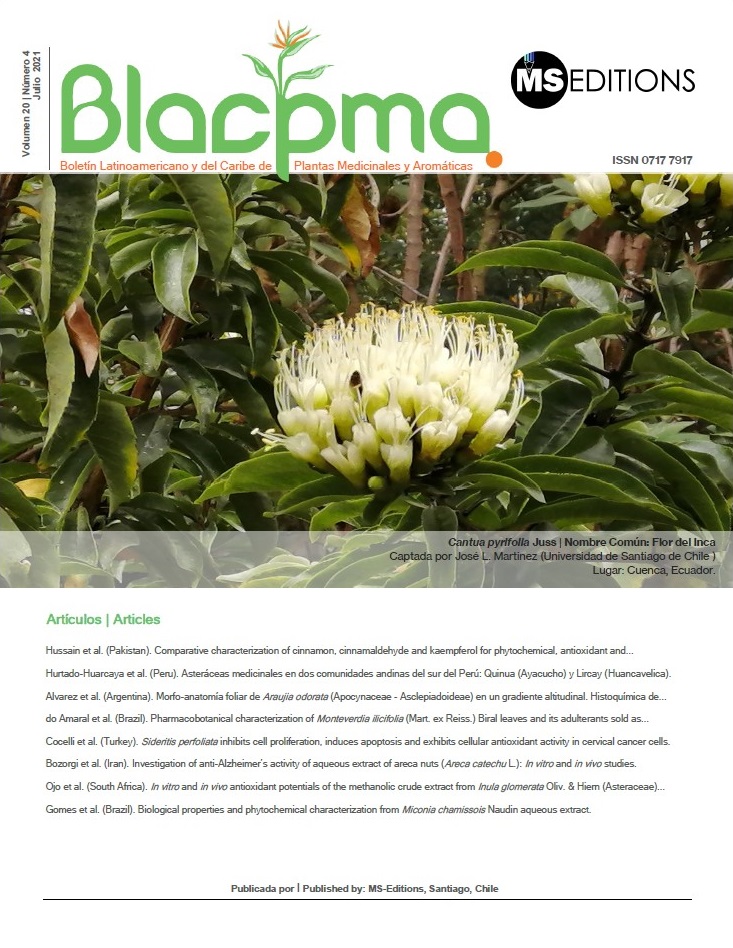Medicinal Asteraceas in two Andean communities in southern Peru: Quinua (Ayacucho) and Lircay (Huancavelica)
DOI:
https://doi.org/10.37360/blacpma.21.20.4.26Keywords:
Asteraceae, Traditional knowledge, Cultural importance, Illness categories, Medicinal plants, PeruAbstract
The aim of this research was conducted an ethnobotanical study of wild asteraceas for medicinal use in two Andean communities of southern Peru, located in Quinua (Ayacucho) and Lircay (Huancavelica) districts. Samples of Asteraceae family were collected and semistructured interviews were conducted to 191 informants (105 in Quinua and 86 in Lircay). Likewise, the cultural importance of each of the species was calculated. 28 genera and 44 species of medicinal wild asteraceae are registered in both communities; 33 species in Quinua and 35 in Lircay. All the species were classified within 18 medicinal subcategories, being the affections of the digestive and genitourinary system which presented the highest number of species and use reports. The Asteraceae of greater cultural importance for both communities is Ambrosia arborescens “marko”. The main conclusión is that communities studied still maintain the medicinal use of asteraceas until today.
Downloads
Downloads
Published
How to Cite
Issue
Section
License

This work is licensed under a Creative Commons Attribution-NonCommercial-NoDerivatives 4.0 International License.

